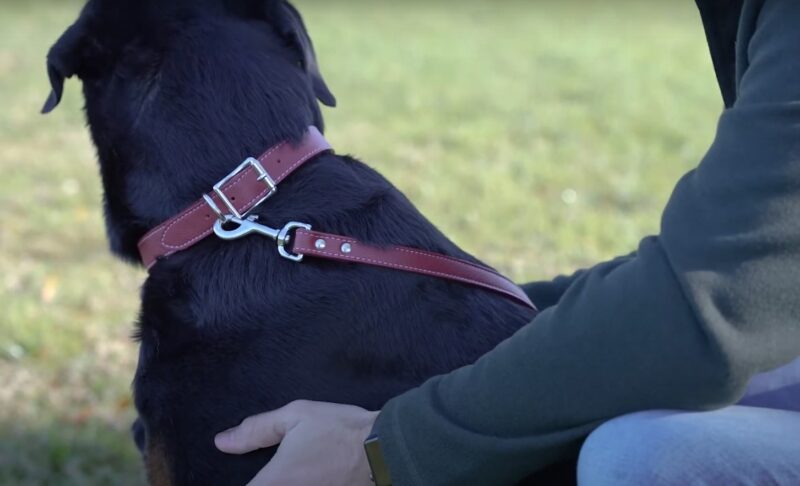As a meticulous dog owner, I explored extensively for high-end leather leashes and collars. Unfortunately, I spent a considerable amount on items that rapidly deteriorated, cracked, or discolored my dog’s coat. My quest ended in Europe when I discovered Italian leather, and I’ve been a loyal fan ever since.
Therefore, when you’re prepared to elevate your pet’s style with the finest functional accessories, Puppy Panache is at your service, offering premium Italian leather dog collars and leashes, along with coordinating accessories for dog owners.
Key Takeaway
What is Italian Leather, Anyway?
So what is it, and why do we love Italian leather? For the same reason the top fashion brands and designers love it for shoes, belts, handbags, and furniture: it is the absolute highest quality leather you can find, anywhere in the world.
Why is Italian leather so much better than leather made elsewhere? Some say it is because Italians are as passionate about leather as they are about food. I can’t argue with that. I can also tell you there are four specific qualities of Italian leather that make it superior to leather made anywhere else in the world:
1) Centuries of Tradition
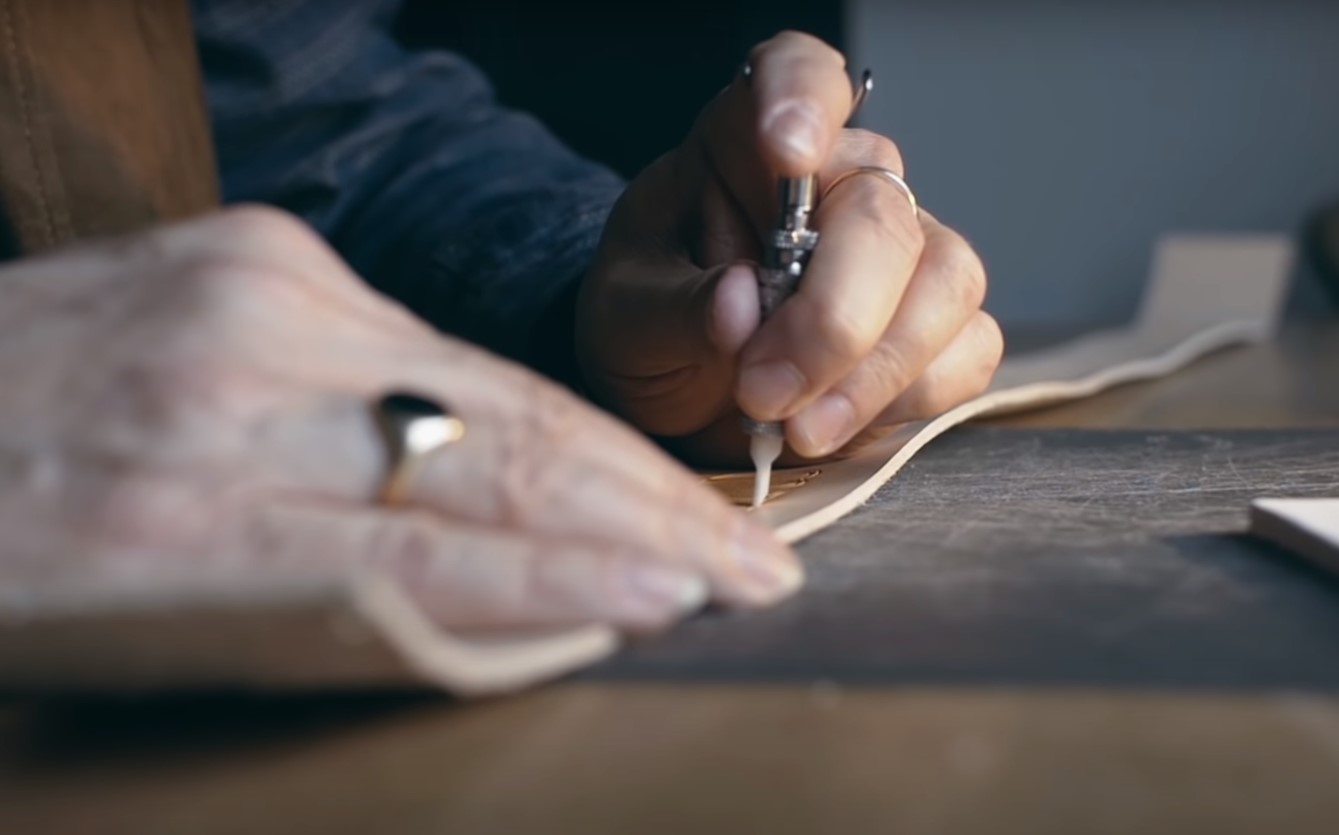
Italians have been making leather for 100 centuries. The Saracens brought the practice to Palermo, in Sicily, in the year 1,000. But the history of Italian leather-making officially dates to 1282, with the creation of Florence’s “Arte dei Cuoiai e Galigai” – the Guild of Curriers and Tanners.
This professional Guild was one of dozens of secular corporations that maintained rigorous quality control over the arts and trades in Florence from the twelfth century into the sixteenth. The Florence Guild of Curriers and Tanners protected the secret techniques used to produce the world’s best leathers. Those closely-guarded family secrets, handed down through the generations, are still in use today, more than half a millennia later.
Currently, Italy produces 16% of the world’s leather, and two-thirds of the leather made in Europe.
2) What is Italian Leather Made of? Only Top Quality Materials!
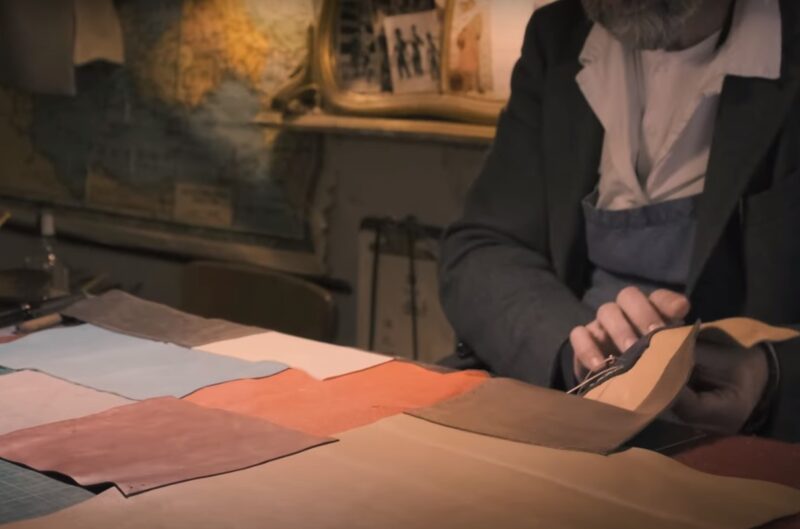
Italian leather originates from cowhides, which are secondary products of the food industry, utilizing only the finest two categories: top grain and full grain leather.
Full grain leather, known as the premium tier, encompasses the hide’s very top layer. It remains untouched, preserving its natural robustness. Conversely, top grain leather is the slightly modified outer layer, often lightly sanded to smooth out any blemishes, making it somewhat softer yet less hardy than full grain. Lesser qualities include corrected grain leather and genuine leather.
The commitment to using only the superior grades of hides enables Italian leather craftsmen to produce items that are both strong and flexible. This results in a material that’s soft to the touch (for both human and canine) and resistant to stretching, unlike suede or other inferior materials. Italian leather’s ability to retain its form, even when folded or scrunched, makes it an excellent choice for your dog’s collar and leash.
3) Traditional Vegetable Tanning Process
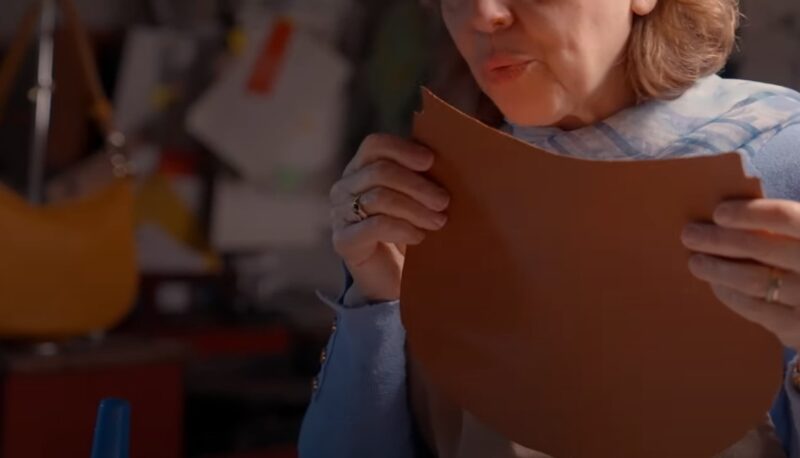
Once procured from the cows, the hides are brought to Tuscany to be tanned in the leather manufacturing area located between Florence and Pisa. Artisans along this famed Route follow the ancient vegetable tanning tradition that was developed around 400 BC by Egyptians and Hebrews. It was eventually improved by Arabs during the Middle Ages, and brought to Italy more than 1,000 years ago.
The meticulous process of vegetable tanning begins with purifying the raw hides in large rotating barrels. This method incorporates a sequence of potent vegetable-based solutions, derived from the tannins found in plant roots, bark, leaves, and seeds. Spanning weeks to months, this traditional approach avoids the harsh chemicals and toxins prevalent in the rapid techniques used by many modern tanners.
Leather crafted through the Italian vegetable tanning method is notable for its water resistance and steadfast colors. Therefore, if your almond-hued Labradoodle happens to run through a sprinkler while donning her burgundy Puppy Panache collar, you can rest assured there will be no dye bleeding onto her coat. Moreover, the absence of harmful chemicals ensures safety for both her skin and yours.
This technique also contributes to the durability and easy care of your pet’s collar and leash. Here’s the appearance of my dog’s collar after a year of everyday use. Cleaning it is as simple as wiping it down with a moist cloth and allowing it to air dry away from direct sunlight.
4) Unsurpassed Craftsmanship
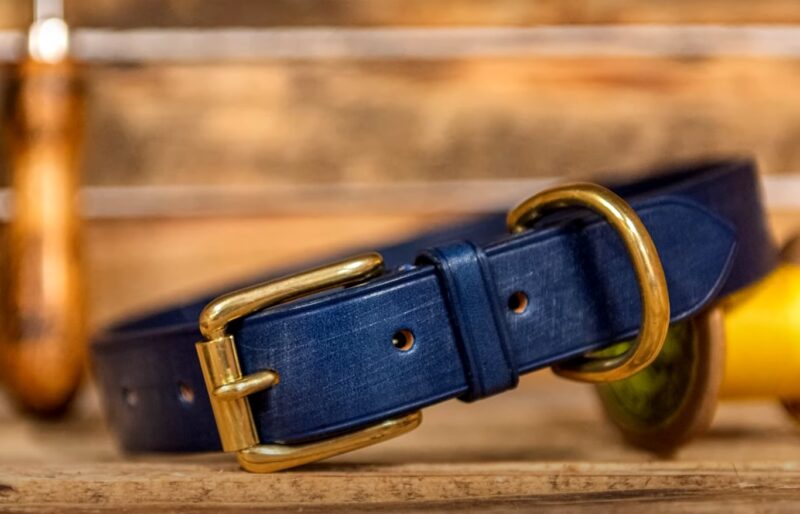
After the leather from Italy is processed, it is meticulously handcrafted by skilled artisans. These craftsmen have inherited their expertise from family-run businesses, immersing themselves in techniques that have been refined over generations.
Dedication to each aspect of their craft is developed over years, ensuring mastery before advancing to subsequent stages.
The defining feature of their work is an acute attention to detail. For example, our studded dog collars are crafted with a double-layer design, incorporating a leather “sleeve” that encases the studs’ rivets. This design choice prevents any metal parts from coming into contact with your dog’s fur, avoiding snags and pulls. Additionally, this meticulous approach guarantees that our collars and leashes remain resilient against cracking, curling, or fraying.
FAQ
How do I care for Italian leather pet accessories to ensure they last?
Regularly clean with a soft, damp cloth and condition the leather periodically to maintain its natural oils and keep it supple.
Can Italian leather withstand harsh weather conditions?
Yes, the vegetable tanning process enhances the leather’s resistance to water and temperature changes, making it suitable for various climates.
Are there any ethical concerns with using leather from the food industry?
Using by-products of the food industry helps minimize waste, making Italian leather a more sustainable option compared to other materials.
How does the price of Italian leather compare to other types of leather?
Given its superior quality, Italian leather products often come at a higher price point, reflecting the craftsmanship and materials used.
Can Italian leather accessories cause allergies for my pet?
Italian leather is less likely to cause allergies due to the natural vegetable tanning process, which avoids harmful chemicals.
Conclusion
Italian leather’s unmatched quality and craftsmanship make it the premium choice for pet accessories. Its rich history, ethical sourcing, and artisanal production processes not only guarantee a product that stands the test of time but also ensures safety and style for your pet. Puppy Panache takes pride in offering this luxurious material for discerning pet owners who seek the best in both function and fashion.
